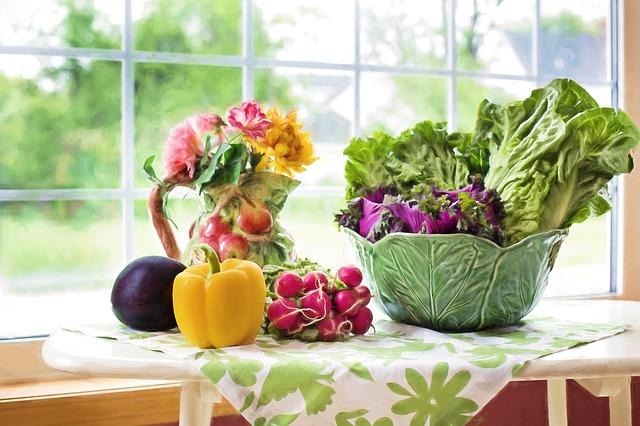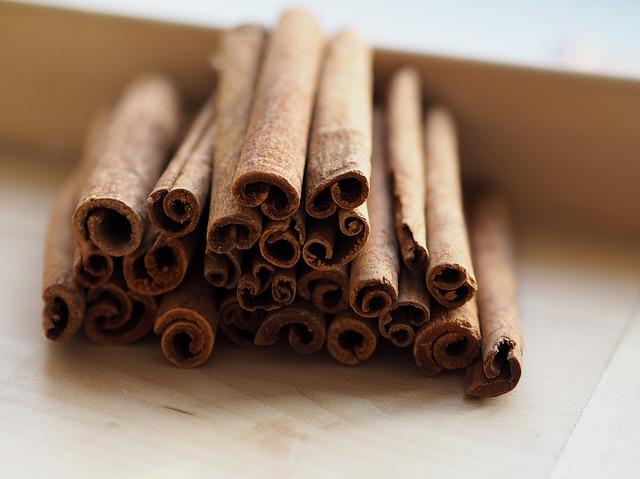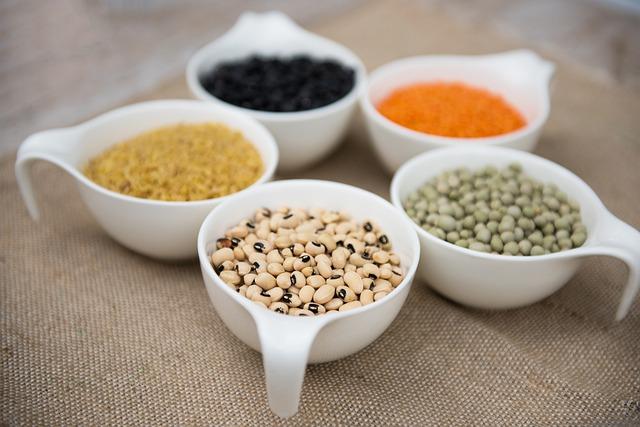Facts About the Kapha Body Type
Each dosha within Ayurveda have different functions in our bodies that they are responsible for. At the same time, they blend and work together to maintain life. The Kapha dosha is the foundation or solidity of the doshas.
Ayurveda believes that there are three body types that are called doshas. Dosha also refers to the energy that we each live in. The three doshas (body types) are Pitta, Vata and Kapha.
While each of us has a bit of each dosha in us, one is usually more dominant than the other two. Ayurveda helps by using these doshas to explain to us how to stay healthy and balanced in order to live a full life of joy and purpose.
This post is going to concentrate on the Kapha dosha. Kaphas are very likeable because of their calm, caring and loving, stable personalities. They are patient, good natured, empathetic and rarely get angry. They are family oriented, love routines and hate change.
Purpose and Function of Kapha in the Body
Kapha regulates the body’s structure building and is needed for stability and agility. It works like glue in the body to hold muscles, bones, tissues, fats and joints together providing the lubrication to run smoothly.
The primary function of Kapha dosha is to rule all kinds of cohesion and by providing lubrication in the body while building tissues, adding density to bones and joints, and produces plenty of mucus, to keep everything working at its most optimal.
This dosha regulates your immune system, the stability of your body, muscle growth and weight.
The best time of the year for a Kapha is late winter and early spring. Kapha dosha is associated with the elements of water and earth. These elements are considered shaping energies. Kapha’s earth qualities are heavy, reliable, stable, cool, slow and dry. Water qualities are also heavy, cool and slow but also flowing and nourishing.
During the winter season, Kaphas struggle more with imbalances because it is not their time of year. Winter’s influence adds additional heaviness to the Kapha dosha that just increases their own mind/body influence of heaviness. These are also reasons why Kaphas tend to sleep a lot and are more likely to gain weight. They prefer a sedentary lifestyle as they really don’t like physical activity.

When in balance, the Kapha dosha provides both peace and love. But when Kapha becomes imbalanced, you’ll have cravings, colds and/or weight gain.
Basic Characteristics of the Kapha Dosha
People that have a dominant Kapha dosha generally have a well-built body with a broad frame and large bone structure. Their body temperature is neither too hot nor too cold while their pulse tends toward the slower side.
Kapha body type people also lean toward longer lifespans and age later in life possibly due to their slower metabolism. Other characteristics would include:
Physically
Height: On the shorter side
Skin: oily, pale, and cool
Hair: full, thick, wavy, shiny, and soft, probably brown
Large, round, and full face
Eyes are large, blue, or light brown
Nose: large, rounded
Large full lips
Sturdy, strong bone structure
Slow metabolism (hard to lose weight)
Sleep is long and deep
May have cool, clammy/sweaty hands and feet
Leans toward a sluggish digestive system
Tendency toward water retention, cold, allergies and congestion
Heavy sleeper that may oversleep
Regular menstrual cycle with little PMS
Slow moving
Good stamina and endurance
Kapha energy is slow, regular and graceful

Emotional and Mental Characteristics of the Kapha Dosha
A Kapha dosha is slow to anger and is emotionally very stable. They prefer a simple lifestyle, are peaceful, loyal and have a sensitive nature. Because of their stability, a Kapha is someone you can rely on in stressful situations. Others like the Kapha’s lovable and grounding natures. Other characteristics include:
Calm and easy going
Good long-term memory
Rarely overexcited
Patient and tolerant
Loving, good natured and easily forgives
Self-satisfied
Naturally stable, loyal, compassionate and generous
Supportive, fun loving and grounded
Focused but resists change so can cause a slowness in learning anything new
Not tolerant to cold and damp places
Sometimes think before they act
Likes their senses stimulated
A Balanced and Unbalanced Kapha Dosha
Kapha is the “glue” that holds the body’s cells together and the energy that forms structure for bones, muscles and tendons. When this dosha is in balance there is plenty of love along with calmness and when the need arises, forgiveness.
Attachment, envy and greed become apparent when a Kapha is out of balance along with physical symptoms like, edema, fatigue, foggy mind and possibly breath difficulties.
It’s important for the Kapha dosha type to exercise regularly, have a consistent sleep routine and maintain a healthy diet to keep the weight gain at bay.
Signs & Symptoms of a Kapha Out of Balance
When a Kapha dosha holds onto too many toxins, it becomes unbalanced, can become lonely, depressed, stubborn and arrogant. Their resistance to change keeps them from seeking help.
An imbalance can also cause the slightly overweight to become obese, become diabetic or other related disorders and find it very hard to get up in the mornings. Instead, an out of balance Kapha dosha will sleep and eat more while exercising less. Other physical signs of an imbalance are:
Insecure and lethargic/sluggish
Melancholy, listless
Fatigue and obesity
Reduced sense of taste and smell
Difficult to get moving again

Mental Symptoms of an Imbalance
Foggy mind, stagnate and possessive
Lack of inner drive
Materialistic and becomes attached to people and beliefs
May withdrawal from social situations
Causes Of Imbalance in the Kapha Body Type
Too much fat and oil in their diet
Dairy products (too heavy)
Inertia
Routine
Little to no exercise
Not enough challenge/stimulation
Too much iced foods/drinks, bread and sweets
Ways to Get Back In Balance
It’s important for someone with a Kapha body type to incorporate their movements and/or exercise into their daily lifestyle. If they don’t, that’s when the sluggishness and overweight come into play.
Try working up a sweat with vigorous exercises like running, hiking, biking or even have a fun time with dancing. It also helps Kapha’s to vary their routine. And wake up before 6am with no naps during the day.
Food types for the Kapha Dosha
Kaphas need foods that come from the earth and are heavier in nature like grains, rice, flour and starchy veggies. They need heat and stimulating foods such as hot peppers and cayenne. The Kasha dosha needs to monitor and manage their quantity and quality of food.
Kaphas need to stay away from heavy, fatty fried foods, milk products and especially sweets. They also need to pass on most snacks and choose broth type soups and steamed veggies. Instead, Kaphas should stick with light, warm, sharp, bitter and stimulating foods.
A Kapha should stay away from mucus-forming foods such as dairy or oily and processed foods/sugar. Avoid sweet veggies like sweet potatoes, zucchini and tomatoes.
Instead stick with astringent veggies, bitter greens or melons. These will help cut through the mucus.
Pungent Tasting Foods
Hot/cayenne peppers, clove, ginger, thyme, basil, wasabi, radishes, mustard, garlic, onions and chili peppers.

Astringent Foods (anything that dries the mouth)
Lentils, dry beans, cabbage, broccoli, apples, pears, cauliflower and potatoes.
Bitter Foods
Fenugreek, lemon peel, turmeric, green leafy veggies, endive, chicory.
Veggies
Include in your diet bitter veggies such as peppers, broccoli, brussel sprouts and cauliflower. Other good veggies for Kapha doshas are beets, celery, onions, lettuce, eggplant, corn, mushrooms and peas.
Dairy
Soy milk and soy products are better for Kaphas, rather than dairy. Dairy is too heavy. Soft cheeses and goat cheeses can be tolerated in moderation.
Proteins
Kaphas don’t do well on high protein diets because they are not suited for eating large amounts of protein. They should avoid excessive amounts of heavy protein along with too much fat.
Instead stick with lighter, lower fat proteins such as beans because they help keep the Kapha dosha energy and digestive system moving. Other good proteins would be chicken, turkey and fish.
Snacks
Light, crispy foods like popcorn and corn tortillas.
It’s important for a Kapha body type to eat a variety of foods because they tend to fall into a rut where food is concerned. Food cuisines such as Latin American and Asian are good choices because they are light, have plenty of veggies with lots of spice but have no dairy.
*Editor’s Note: The information in this article is intended for your educational use only and is not a substitute for professional medical advice, diagnosis, or treatment. Always seek the advice of your physician or other qualified health providers with any questions you may have regarding a medical condition and before undertaking any diet, supplement, fitness, or other health programs.

Final Thoughts
Many followers of Ayurveda believe that good health is based on your dosha or body type. Ayurvedic medicine is widely used across the world today due to the belief of whole-body healing. Many of the ideals of Ayurveda can be incorporated into a healthy lifestyle. And once you know your dosha you can be more specific in your daily routine.
Next up and last in this series of posts on the dosha will be the Vata dosha or body type. Have you been able to figure out what body type or dosha you are yet? If not, trying taking this quiz on Deepak Chopra’s site. As always….
Stay Awesome!
Cher
Relevant Reading:
Learning About Chakras For Beginners
Five Principles of Reiki
If you enjoyed my post, pin it so you’ll have it for later, then share it—It would help me increase my readership and is a wonderful compliment!!










